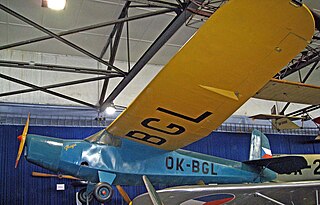
The Praga E.114 was a single-engine sport airplane, designed and manufactured by the Czechoslovakian company ČKD-Praga. Due to its light weight it was also called Air Baby.
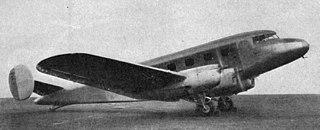
The Potez 661 was a four-engined metal low-wing monoplane airliner developed in France just before World War II. The single example flew with Air Afrique on French colonial routes.
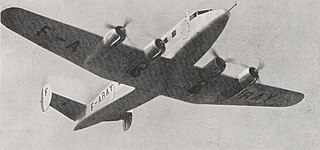
The Potez 662 was a higher powered and faster development of the Potez 661. Like its predecessor, it was a low wing, four engine monoplane carrying 12 passengers. Only one was built, serving with the French Air Ministry.
The Parnall Prawn was an experimental flying boat built in the United Kingdom in 1930. Its single engine was fitted on a tilting mounting in the nose, so that the propeller could be kept clear of the water on takeoff and landing. Only one was built and it is not known whether it was ever flown.
The Comper Kite was a single-engined, two-seat touring monoplane built in the UK, derived from the contemporary Comper Streak racer. Only one was built.
The Marendaz Trainer was a two-seat low-wing training aircraft built in the UK just before World War II. Only one was completed.

The IAR-22 was a single engine basic trainer built in Romania in about 1934. It was a low-wing monoplane with two seats in tandem and a fixed conventional undercarriage.
The Farman F.280 was a three engine, cantilever wing monoplane designed in France as a mail carrier in the early 1930s. Underpowered and slow, only two were built and briefly used.

The Aeronix Airelle is a tandem wing ultralight with twin engines in push-pull configuration, that was designed and built in France at the start of the millennium. It was intended to be homebuilt from kits, and a few prototypes were constructed, but development ended when the company went into receivership in 2006.

The SGP M-222 Flamingo was an Austrian twin engine, four seat light aircraft, developed with a series of prototypes into the early 1960s. There was no series production.

The Sud-Est or SNCASE SE-2100, sometimes known as the Satre SE-2100 after its designer, was a tailless, pusher configuration touring monoplane with a single engine and cabin for two. Only one was built.

The Potez-CAMS 160 was a one-off 5/13 scale flight model built in France, first flown in the summer of 1938 to test aerodynamic and hydrodynamic qualities of the Potez-CAMS 161 airliner and mail carrier, which was too large for detailed modelling in existing wind tunnels.
The IIL IS-4 was a single seat, high performance sailplane designed by Iosif Șilimon and built in Romania in the late 1950s.
The Landray GL.03 Pouss Pou was a small, pusher configuration tandem wing aircraft built in France in the early 1980s. Only one was completed, though it was much modified.
The Pocino PJ.1A Toucan is a French, single seat, twin boom light aircraft of pusher configuration which first flew in 1989. The single example remained active until at least 2007.

The Hirsch or Hirsch-MAéRC H.100 is an experimental aircraft, built in France in the 1950s to test an aerodynamic gust suppression system. The system worked but was not further developed.
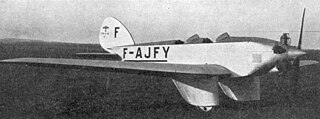
The Albert A-60 was a single engine, two seat, wooden sports monoplane designed and built in France in the early 1930s. Two were built and flown with three different engines.

The Guillemin JG.10 or Blériot-Guillemin JG.10 was a French two seat touring aircraft, designed to be as simple and safe to fly and maintain as a car, with similar facilities, as well as provision for parachutes.
The Poite 3 was a one-off, all metal touring aircraft which seated two in tandem. It was built and flown in France in 1931.
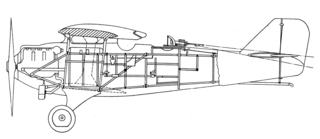
The Bréguet 25 or XXV was a French two seat fighter from 1925. It was heavily armed, carrying seven machine guns.












